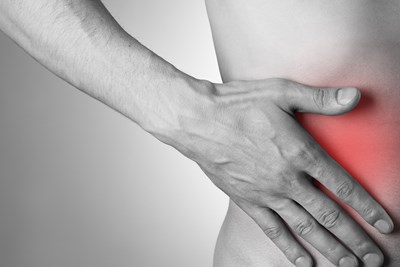Pancreatitis is an inflammation of the pancreas, a small gland responsible for producing hormones and digestive enzymes to help process glucose. Located to the left of the abdomen the pancreas can become inflamed for a number of reasons -- all of which can be dangerous. Here’s a look at the types, causes, symptoms, and treatments of pancreatitis.
Types of Pancreatitis
Most people can develop two distinct types of pancreatitis.. Acute and chronic pancreatitis are a potential for anyone, although certain risk factors can increase your potential to develop a form of pancreatitis.
Chronic pancreatitis usually comes in one of two forms: large duct or small duct chronic pancreatitis. Large duct pancreatitis is easy to see on imaging tests and is more common in males. By contrast, small duct seems to be more common in women and is more difficult to diagnose. Other forms of chronic pancreatitis include hereditary pancreatitis, as well as tropical and autoimmune chronic pancreatitis.
Alcoholic pancreatitis is brought on by years of alcoholism (generally at least 6) and may or may not be discussed as its own type of pancreatitis within the medical community. Alcoholic pancreatitis can be either chronic or acute, particularly depending upon other risk factors (like genetics).
Causes of Pancreatitis
The inflammation leading to pancreatitis is generally the result of a digestive enzyme trying to do its job within the pancreas, rather than the stomach. As a result, the cells of the pancreas become irritated and inflamed.
Aside from chronic alcohol abuse, acute pancreatitis is also often caused by gallbladder disease, or gallstones. Chronic pancreatitis can result from multiple bouts of acute pancreatitis. Genetics, cigarette smoking, certain medications, abdominal surgery or injury, and a wide variety of diseases are also common causes and risk factors of pancreatitis.
Symptoms of Pancreatitis
While some signs of pancreatitis may overlap, the sudden onset of acute pancreatitis may differ in presentation from chronic pancreatitis, which has time to work changes on the body. Chronic pancreatitis may be evidenced by unexplained weight loss, dark or oily bowel movements, and persistent upper abdominal pain.
Acute pancreatitis appears with a lot of sudden symptoms, rather than the continued worsening of what can seem to be more mild symptoms. The abdominal pain may seem to be present in your back and worse after you eat; it may hurt to the touch. Additionally, you may develop a fever, fast heartbeat, nausea, and vomiting.
Treatments for Pancreatitis
Without proper treatment, you can develop serious complications as a result of pancreatitis. Your treatment may begin by a few days of fasting, subsisting only on intravenous fluids until the inflammation begins to recede. If your abdomen is still painful when you begin eating again you may need a feeding tube. Pain medication may also be necessary to control excessive abdominal pain.
Once the inflammation is under control, your doctor will have to treat the underlying cause of pancreatitis. This might include removing an obstruction from or widening the bile duct; however, it is important to note that the procedure used to diagnosis this can actually cause acute pancreatitis, particularly in elderly populations. Other forms of treatment might include gallbladder surgery to remove stones, surgery on the pancreas itself to release excess fluid build up, or learning to manage alcoholism.
Once you leave the hospital, you may need to continue eating a special diet to help control pancreatitis or taking enzymatic supplements to ensure you get nutrition from the food you’re eating. Pancreatitis should always be taken seriously, and you should go to the hospital immediately upon realizing something is amiss. Even if your abdominal pain does not herald pancreatitis, many serious conditions are characterized by severe abdominal pain.



